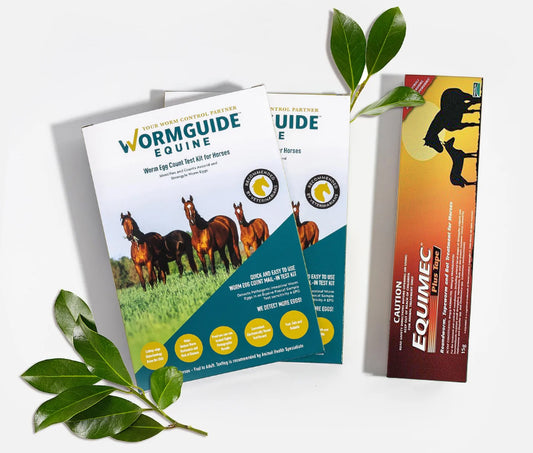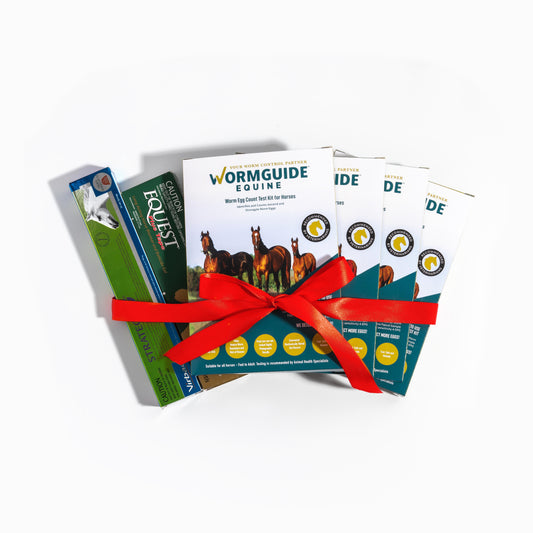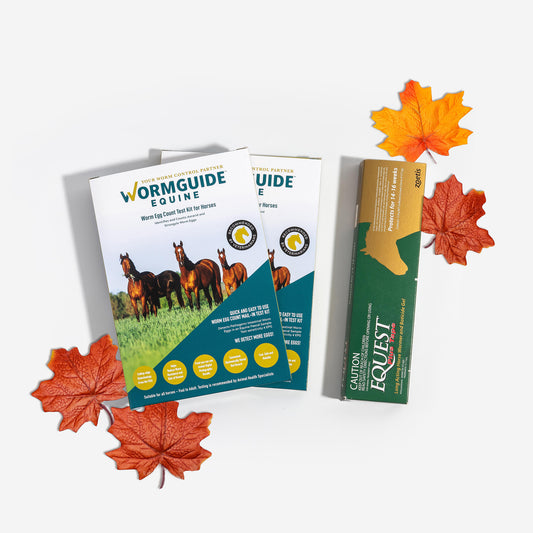It's the middle of winter in Australia. But we have many varied winter climates. Some regions of our country are really cold while other regions are not so cold and other regions feel a cooler interval temperature change.

In fact, Australia experiences almost every winter climatic condition encountered elsewhere in the world.
When it`s winter, what's the local weather conditions for the free-living strongyle worms living on your horse's pasture?
These questions are most important because the direct life cycle of strongyle horse worms is that they must visit the environment (pasture) before they are capable of infecting your horse.
But understanding the relationship these horse worms have with the climate can tell you "when" your horses are at peak risk of becoming infected. The ability of worm eggs passed in your horse`s poo to hatch and develop to an infective stage on pasture is strongly influenced by the temperature.
Did you know that:
- All horses have small strongyle worms.
- You can never get rid of them.
- Eradication is impossible.
- Strongyle worms require attention in horses on green pasture.
- Strongyle worm control is better when timed during peak seasons.
- Winter temperatures slow their development on pasture or stops it altogether.
Are strongyle horse worms like reptiles?
You could say strongyle worms are like reptiles. Their level of activity depends on how warm it is or how cold it is.
To steal a line from the popular children's story " Goldilocks and the Three Bears", when the temperature is optimal, not too hot nor too cold but just right for strongyle worms, they hatch and can survive longer on pasture.
If it's below 6°C, they are still, no eggs hatch. If it's warm they hatch, wriggle around, swim and move on the grass waiting for a horse to eat them. If it's really hot they hatch but use up their energy resources very rapidly. They must be eaten quickly by a horse or die.
The `when` also includes the effects of moisture which is a critical because larvae (baby worms hatched from eggs) prefer to move around in water films on grass while they wait for a horse to eat them. Intact moist poo balls are highly protective for eggs and larvae.

How quickly worm eggs hatch and develop depends on the climate
The AAEP that guides the world`s worm control decisions published the effects of temperature on the development and survival of strongyle worms on pasture.
Horse research scientists and parasitologists work hard to fill the knowledge gaps to provide solutions to minimise the risk of worm-related disease, delay further development of dewomer resistance and maintain effective dewormer drugs for as long as possible.
Currently, no Australian standard guidelines exist on using dewormers in horses across our various climatic zones... yet!
Understanding the life cycle of free-living small strongyles on pasture using a computer simulation model has been useful in research efforts.
In short, the development of these horse worms is determined by temperature and moisture and survival in the environment will vary greatly from region to region and season to season.
Your guide on effects of temperature:
Above 40°C: No development at all. Worms die rapidly on pasture. Maybe inside a moist poo ball they could survive a little longer.
33 - 40°C: Eggs hatch quickly, often less than a day. Larvae die quickly but able to survive in the moisture of a poo ball for a few weeks.
25 - 33°C: Good for egg hatching and larvae development. Larvae reach infective stage within 3- 4 days, with highest larval yield at 28°C but they survive for only a few weeks because it's too warm.
10 - 25°C: Eggs hatch and develop into the infective stage in 2-3 weeks and can survive for several weeks on pasture.
6 - 10°C: Eggs hatch but the development into an infective stage takes months.
Below 6 °C: No eggs hatch and no development. Like reptiles they sit still and don`t do anything.
Source: AAEP 2024
Takeaways
- No need to deworm horses to suppress strongyle egg output on pasture when there is no development of strongyle eggs on pasture due to extreme cold winter temperatures (below 6°C).
- Above 6°C winter temperatures slow the development of small strongyle eggs on pasture.
- Under cool winter conditions larvae survive longer on pasture.
- Strongyle eggs hatch and develop into infective larvae under conditions of moderate temperature and moisture.
- Most climates feature temperature intervals when less transmission occurs.
- Lower numbers of infective larvae in winter with greater numbers in late spring and late autumn in regions.
How do the strongyle worms feel about the winter weather in your location?
WormGuide Top Tip

Concept of the Current Worm Control Guidelines Explained
As the knowledge gaps with scientific evidence are filled, it's important for horse owners and managers to start thinking differently about worm control to protect the efficacy of available deworming drugs.
Current guidelines promote strategies intended to slow further development of dewormer resistance, such as targeting treatments to adult horses (over 3 years) on the basis of surveillance faecal egg counts (FECs).

The goal is to manage both your horse's worm control and dewormer use in order to slow the development of dewormer drug resistance to keep the drug effective as long as possible.
Recommendations follow a two-tiered principle.
- Baseline (foundation) treatments aim at controlling other worms, such as large strongyles, ascarids, and tapeworms. All adult horses despite egg counts should benefit from a maximum foundation treatment twice annually, at regular 6 month intervals.
- Surveillance-based treatments aim at controlling pasture contamination with strongyle eggs. All further treatments should be targeting high strongyle shedders (> 500 EPG). Depending on the duration of the strongyle transmission season, high shedders should be treated with one or two additional treatments to reduce the number of eggs on pasture.
Find out your adult horse`s egg shedding level with the Super Surveillance faecal egg count (FEC) The most precise egg count technique available.










